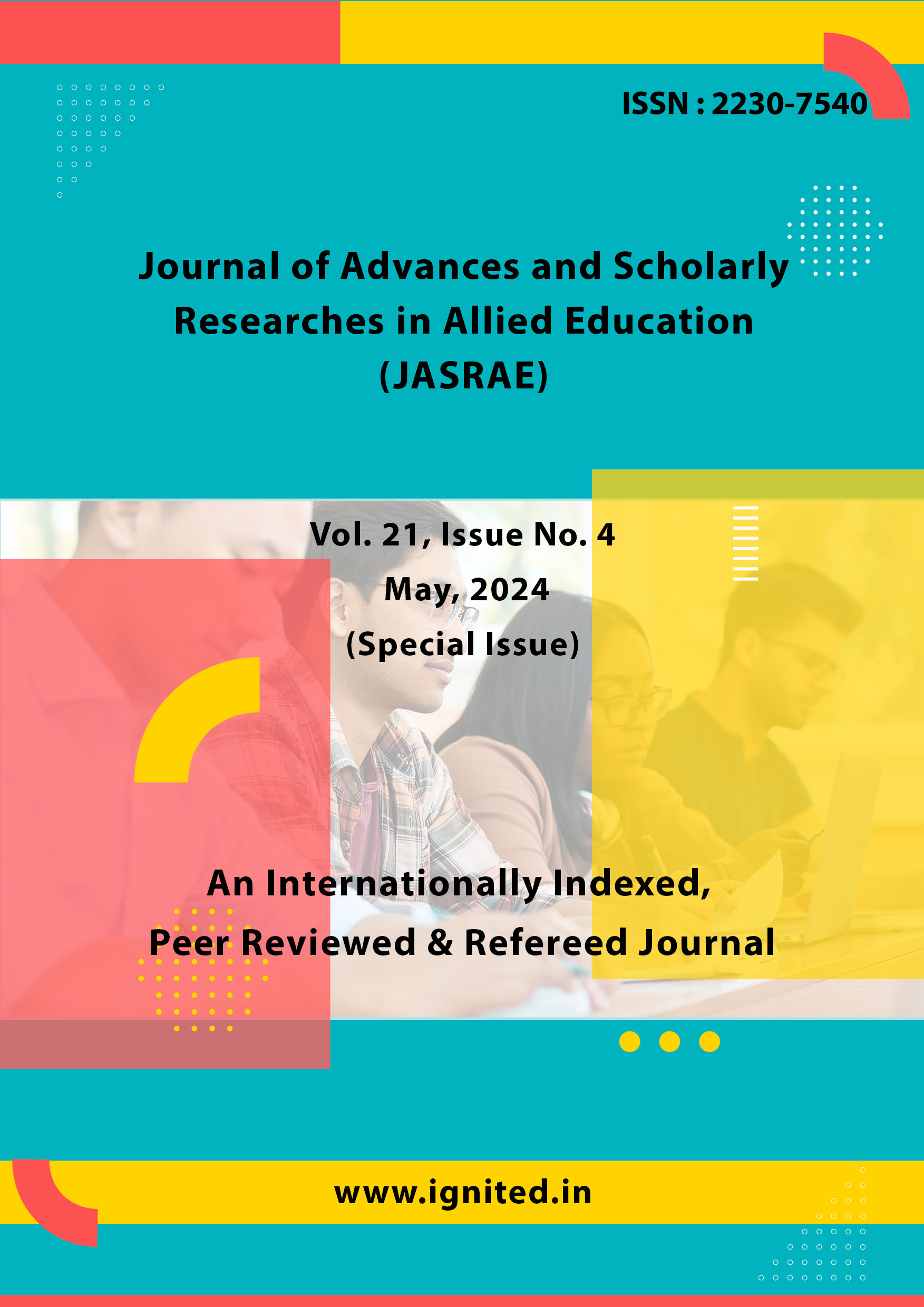Special education among children with autism spectrum disorder
DOI:
https://doi.org/10.29070/9psnc432Keywords:
Autism, Autism Spectrum Disorder (ASD), education, chlidrenAbstract
For children with autism spectrum disorder (ASD), special education is essential to improving their development and learning. This study examines the most recent strategies and techniques used in individualized education plans (IEPs), applied behavior analysis (ABA), and sensory integration treatment for children with ASD in special education. A review of current research and case studies is used to assess how successful various methods are. The study also addresses the difficulties that educators and caregivers have when putting these ideas into practice, such as the lack of resources and the need for specialized training. The evaluation emphasizes the value of working together as a team with educators, parents, and healthcare providers to create and carry out successful education programs for kids with ASD.
Downloads
References
American Psychiatric Association. (2013). Diagnostic and statistical manual of mental disorders (5th ed.). Arlington: American Psychiatric Association.
Autism and Developmental Disabilities Monitoring Network Surveillance Year 2008 Principal Investigators. (2012). Prevalence of autism spectrum disorders—autism and developmental disabilities monitoring network, 14 sites, United States, 2008. Morbidity and Mortality Weekly Report: Surveillance Summaries, 61(3), 1-19.
Autism Speaks. New York: Autism Speaks Inc.; (2005) [Last accessed on 2017 Mar 20]. Available from: https://www.autismspeaks.org/what-autism/symptoms/
Autism-Society.org. Maryland: The Autism Society; (1965). [Last accessed on 2017 Mar 20]. Available from: http://www.autism-society.org/
Cahyo Adi Kistoro, H., Setiawan, C., Latipah, E., & Putranta, H. (2021). Teachers' Experiences in Character Education for Autistic Children. International Journal of Evaluation and Research in Education, 10(1), 65-77.
Center for Disease Control and Prevention (CDC). (2014). Prevalence of autism spectrum disorder among children aged 8 years—Autism and Developmental Disabilities Monitoring Network, 11 states, United States, 2010. MMWR, 63 (SS-2), 1–21.
Center for Disease Control and Prevention (CDC). (2016). Prevalence and characteristics of autism spectrum disorder among children aged 8 years—Autism and Developmental Disabilities Monitoring Network, 11 states, United States, 2012. MMWR, 65 (SS-3), 1–23.
Chamberlain, B., Kasari, C., & Rotherman-Fuller, E. (2007). Involvement or Isolation? The social networks of children with autism in regular classrooms. Journal of Autism and Developmental Disorders, 37, 230–242.
Hopkins, L. (2011). The path of least resistance: A voice‐relational analysis of disabled students’ experiences of discrimination in English universities. International journal of inclusive education, 15(7), 711-727.
Howlin, P., Goode, S., Hutton, J., & Rutter, M. (2004). Adult outcome for children with autism. Journal of child psychology and psychiatry, 45(2), 212-229.
Ingersoll, B., & Dvortcsak, A. (2006). Including parent training in the early childhood special education curriculum for children with autism spectrum disorders. Topics in Early Childhood Special Education, 26(3), 179-187.
Koegel, L., Matos-Freeden, R., Lang, R., & Koegel, R. (2012). Interventions for children with autism spectrum disorders in inclusive school settings. Cognitive and Behavioral Practice., 19(3), 401–412.
McDonald, C. A., Lopata, C., Nasca, B. C., Donnelly, J. P., Thomeer, M. L., & Rodgers, J. D. (2016). ABAS-II adaptive profles and correlates in samples of children with HFASD or LFASD. Journal of Developmental and Physical Disabilities, 28(5), 769–783.
O’Brien, G., & Pearson, J. (2004). Autism and learning disability. Autism, 8(2), 125-140.
Raina, S. K., Kashyap, V., Bhardwaj, A. K., Kumar, D., & Chander, V. (2015). Prevalence of autism spectrum disorders among children (1-10 years of age)-findings of a mid-term report from Northwest India. Journal of postgraduate medicine, 61(4), 243-246.
Rehfeldt, R. A., Dillen, J. E., Ziomek, M. M., & Kowalchuk, R. K. (2007). Assessing relational learning deficits in perspective-taking in children with high-functioning autism spectrum disorder. The Psychological Record, 57, 23-47.
Sansosti, J. M., & Sansosti, F. J. (2012). Inclusion for students with highfunctioning Autism Spectrum Disorders: Defnitions and decision making. Psychology in the Schools, 49(10), 917–931
Siklos, S., & Kerns, K. A. (2006). Assessing need for social support in parents of children with autism and Down syndrome. Journal of autism and developmental disorders, 36, 921-933.
Stahmer, A. C., Collings, N. M., & Palinkas, L. A. (2005). Early intervention practices for children with autism: Descriptions from community providers. Focus on autism and other developmental disabilities, 20(2), 66-79.
Thomeer, M. L., McDonald, C. A., Rodgers, J. D., & Lopata, C. (2017). High-functioning autism spectrum disorder: A framework for evidence-based practice. School Mental Health..
Toomey, J. A., Lopata, C., Volker, M. A., & Thomeer, M. L. (2009). Comprehensive intervention for high-functioning autism spectrum disorders: An in-depth case study. In M. T. Burton (Ed.), Special education in the 21st century (pp. 95–118). Hauppauge, NY: Nova Science.
Wei, W., Wagner, M., Christiano, E. R. A., Shattuck, P., & Yu, J. W. (2014). Special education services received by students with autism spectrum disorders from preschool through high school. The Journal of Special Education, 48(3), 167–179.
White, S. W., Scahill, L., Klin, A., Koenig, K., & Volkmar, F. R. (2007). Educational placements and service use patterns of individuals with autism spectrum disorders. Journal of Autism and Developmental Disabilities, 37, 1403–1412
Wiorkowski, F. (2015). The experiences of students with autism spectrum disorders in college: A heuristic exploration. The Qualitative Report, 20(6), 847-863.











